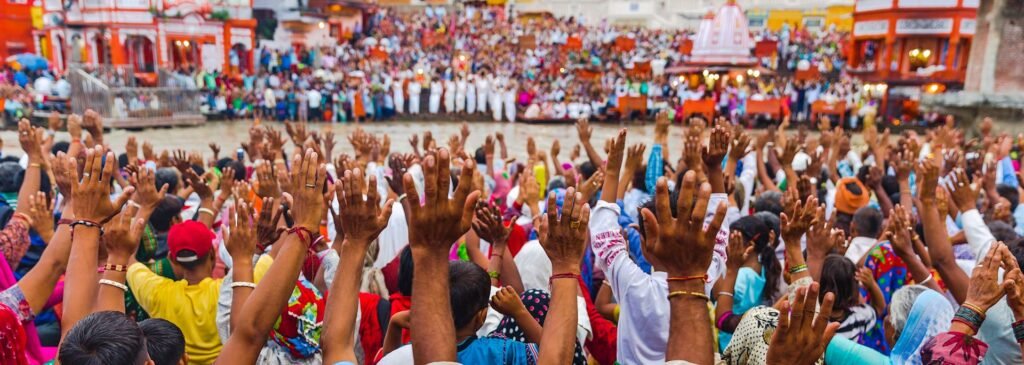
Across the globe, there exist places that captivate the heart and imagination, not just for their beauty but also for their deep cultural significance. One such land is often described as a tapestry of ancient temples, vibrant festivals, and breathtakingly diverse landscapes. Whether it’s the rhythmic chants echoing through sacred shrines, the explosion of colors during a festival, or the serene beauty of a mountain at dawn, this land is a feast for the senses. This is a place where tradition and nature intertwine to create a realm of wonder — a land of temples, festivals, and diverse landscapes.
Temples: Living Symbols of Spiritual Legacy
Temples are more than mere architectural marvels; they are the soul of this land. These sacred structures, carved from stone and built with intricate precision, tell stories of gods, kings, and ancient civilizations. Every temple, whether modest or monumental, is a tribute to faith and a living testament to centuries of spiritual devotion.
In the north, grand mountain-top temples cling to rugged cliffs, accessible only after long treks that test both body and spirit. These are places where pilgrims ascend with offerings, their chants rising into the thin mountain air. Snow-capped peaks often surround such sites, creating an atmosphere that feels otherworldly.
In the south, temple cities are known for their colossal gopurams (ornate towers), which dominate the skyline with sculpted gods, mythical creatures, and scenes from ancient epics. These towers are not just architectural feats; they are symbols of divine presence in everyday life. The inner sanctums of these temples are places of deep reverence, filled with the scent of jasmine, camphor, and sandalwood.
Many temples are set near rivers, forests, or on the edges of deserts, their locations deliberately chosen to align with cosmic energy. These structures are not isolated monuments — they are the heartbeat of communities, often forming the center of town life. Rituals are performed daily, attended by both priests and ordinary worshipers, maintaining a continuity that spans generations.
Festivals: Celebrations of Life and Spirituality
If temples are the still, serene soul of this land, festivals are its vibrant, beating heart. The calendar here is filled with festivals, each more dazzling and meaningful than the last. These celebrations transcend religion and region; they are about life, gratitude, the changing seasons, and the celebration of shared values.
The festival of lights, celebrated as a triumph of good over evil, transforms entire cities into glowing landscapes. Rows of oil lamps, electric fairy lights, and bursts of fireworks paint the night sky in vibrant hues. Families gather, exchange sweets, wear traditional attire, and offer prayers together, creating a sense of unity and joy.
Another iconic festival is the celebration of colors. What begins as a spiritual ritual soon becomes a carnival of joy, with people playfully smearing each other in powdered pigments — red, yellow, green, blue. It is a day when social boundaries vanish, and strangers become friends through the simple act of color and laughter.
Then there are harvest festivals, which vary from region to region. In the rice paddies of the east, farmers thank the earth with music and dance. In the arid west, camel fairs and folk performances celebrate survival and resilience. Every community has its unique way of honoring nature’s bounty, and these festivals are often accompanied by traditional food, craft markets, and local sports.
Religious processions are also a staple. Statues of deities are carried through the streets on chariots, accompanied by drum beats, incense smoke, and joyous chants. Devotees walk miles, some barefoot, some performing acts of devotion like rolling or crawling, all as a form of penance or thanksgiving.
Landscapes: Nature’s Grand Mosaic
Few places in the world offer the geographical diversity found here. From towering mountain ranges to golden deserts, from tropical rainforests to pristine beaches, this land is nature’s grand mosaic.
In the north, the Himalayan range rises like a crown. The mountains are not just a geographical feature; they are considered sacred. Many believe these peaks are the abode of gods, and they are treated with deep reverence. Rivers that originate here flow through the entire region, providing life to plains and villages. Trekkers, monks, and nature lovers all find something magical in these snowy realms.
The central plains, fed by these rivers, are lush and fertile. Endless fields of wheat, mustard, and rice form a patchwork quilt of green and gold. Dotted across these plains are small villages, where life follows the rhythms of agriculture and traditional wisdom. These areas are also home to ancient ruins and heritage cities, where history feels tangible.
To the west lies the great desert. Though harsh and arid, it bursts into color during sunset and spring blooms. Nomadic tribes here have learned to live in harmony with the desert, building homes from mud and celebrating life with music and dance that resonate across sand dunes.
The south and east, by contrast, are lush with tropical vegetation. Rainforests filled with exotic flora and fauna offer sanctuary to elephants, leopards, and rare birds. Hill stations tucked among tea plantations provide cool escapes and sweeping views of valleys below. The coasts are lined with coconut palms and fishing villages, and the beaches — some wild and untouched, others lively and commercial — reflect the vast range of natural beauty.
Mangrove forests, salt marshes, and high-altitude meadows further enrich this landscape. Protected areas and national parks ensure that both flora and fauna thrive, even in the face of modern development. Eco-tourism initiatives allow visitors to explore these areas while promoting conservation and community-based travel.
Cultural Diversity: A Tapestry of People and Traditions
One of the most remarkable features of this land is its diversity. Different regions speak different languages, practice unique customs, and cook distinct cuisines, yet there is a shared identity that binds them together. It’s a land where multilingualism is common, and where diversity is not merely tolerated — it is celebrated.
In the markets of big cities, one hears a cacophony of dialects, smells street foods from every corner of the country, and sees people in all kinds of traditional attire. In rural areas, tribal communities maintain ancient customs, including tattooing, storytelling, and animistic rituals, coexisting peacefully with mainstream religions.
The arts are equally diverse. Classical dance forms with centuries-old techniques coexist with tribal performances that are spontaneous and energetic. Traditional music, with instruments like the sitar, tabla, and flute, is often heard during both temple rituals and festivals. Handicrafts such as pottery, weaving, embroidery, and sculpture not only preserve local identities but also provide livelihoods for millions.
Cuisine reflects this diversity as well. From spicy curries and fragrant rice dishes to tangy snacks and sweet desserts, the food changes dramatically from one region to another. Each community has developed its own palate based on local ingredients, climate, and cultural influences — yet all form part of a greater culinary heritage.
A Journey of the Soul
To visit this land is to embark on more than a journey of sightseeing; it is a journey of the soul. The deep spirituality infused into daily life, the warmth of the people, the exuberance of its festivals, and the grandeur of its landscapes together create an experience that lingers long after the trip is over.
Travelers often speak of the emotional resonance they feel here — a connection to something larger than themselves. Whether meditating at a silent temple, dancing during a festival, or hiking through a forest trail at sunrise, there is a constant feeling of being part of a story that spans thousands of years.
Even amidst modernity and rapid urban development, this land retains its ancient spirit. Skyscrapers rise beside thousand-year-old shrines, and digital marketplaces exist alongside traditional bazaars. This juxtaposition is not a conflict, but a coexistence — one that respects the old while embracing the new.
Conclusion
A land of temples, festivals, and diverse landscapes is not just a description — it is a profound identity. It represents a place where the sacred and the celebratory, the natural and the manmade, the ancient and the modern, live in harmony. It is a land that calls out not only to travelers but to seekers, dreamers, and storytellers. It is a place where every day is a dance of light and shadow, sound and silence, devotion and celebration.
For those who yearn for a destination that offers not just sights, but insights — not just photos, but memories etched into the heart — this land awaits with open arms.




